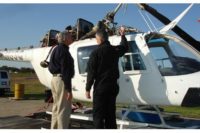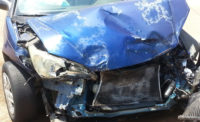After getting ejected from the National Transportation Safety Board’s (NTSB) investigation into the crash of one of its vehicles, Tesla, Inc. – along with everyone else – will learn the probable cause of the incident when the agency discloses it in a meeting next month.
On March 23, 2018, a 2017 Tesla Model X electric-powered passenger vehicle, crashed while traveling southbound on US Highway 101 in Mountain View, California. The driver and only occupant of the vehicle, 38-year-old Walter Huang, was killed. The vehicle was being operated with advanced driver assistance features, which Tesla refers to as “autopilot.”
Tesla violated terms of agreement
Tesla was initially designated a party to the NTSB’s investigation into the crash because it could provide suitable qualified technical personnel who could actively assist in the process. However, that participation came with a caveat: Tesla was prohibited from releasing any information related to the crash investigation.
In an April 2018 letter to Tesla CEO Elon Musk, Robert L. Sumwalt, III NTSB Chairman, said that policy was “clearly spelled out” to the Tesla representative, who signed an NTSB Party Agreement form. Then on April 11 , 2018, the agency became aware of a press statement issued by Tesla that contained information “that was incomplete, analytical in nature, and speculated as to the cause of the March 23, 2018 crash.”
Prior to the NTSB' s adoption of the final report regarding this crash, only appropriate NTSB personnel are authorized to publicly disclose investigative findings; even then, the release is limited to verified factual information identified during the course of the investigation.
Because Tesla failed to abide by the terms of the NTSB Party Agreement, the company’s party status was revoked from the investigation into the crash.
Tesla: Driver didn't take any action
In a Tesla blog post of March 30, 2018 – seven days after the incident - the company claimed that the autopilot on the vehicle was engaged with the adaptive cruise control follow-distance set to minimum at the time of the crash. “The driver had received several visual and one audible hands-on warning earlier in the drive and the driver’s hands were not detected on the wheel for six seconds prior to the collision. The driver had about five seconds and 150 meters of unobstructed view of the concrete divider with the crushed crash attenuator, but the vehicle logs show that no action was taken.”
The post went onto the attribute the severity of the damage to the crushed highway safety barrier, which had been damaged in a prior accident.
The NTSB plans to release the probable cause of the crash at a board meeting Feb. 25, 2020.



